
All categories
Featured selections
Trade Assurance
Buyer Central
Help Center
Get the app
Become a supplier

(2582 products available)



































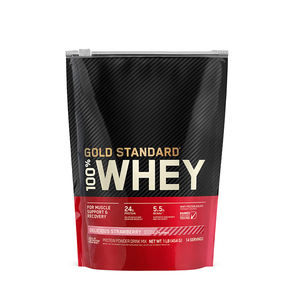
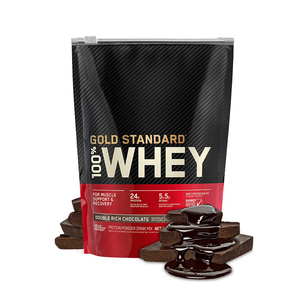
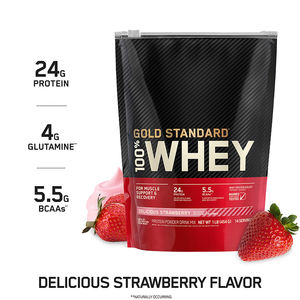
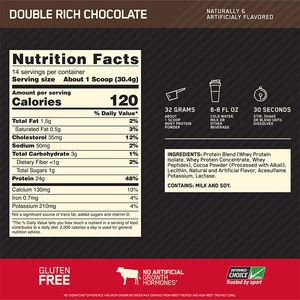
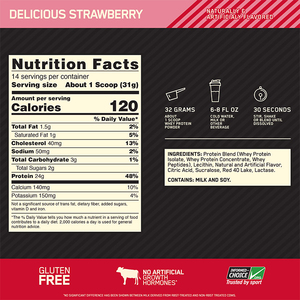
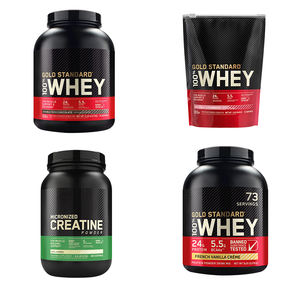











Whey Protein Isolate (WPI)
Whey Protein Concentrate (WPC)
Whey protein concentrate is the most common type of whey protein. Most of its composition is protein, usually around 70-80%. Representatives from Whey protein manufacturers obtain this form by minimally processing the whey. Therefore, it contains some non-protein components, including fats and carbohydrates. Many consider it to have a better flavor compared to isolates. This is because it contains a small lactose and higher concentration of other nutrients like immunoglobulins. This makes it suited for a wider audience to help with general health and fitness.
Whey Protein Hydrolysate (WPH)
When selecting whey protein, one should consider the type that will give them the desired benefits. For instance, someone seeking quick muscle recovery after workouts, should consider hydrolysate as it is pre-digested. Anyone in general fitness looking to build muscle at a normal rate can settle for whey concentrate since it is moderately processed. If pure, fast-acting whey is not necessarily required, isolate can be optimal since it's a purely processed whey. Secondly, one should ensure they are using protein powder avoiding artificial additives and fillers that can be detrimental. Additionally, selecting companies that offer organic-certified whey will ensure that all the cattle feed adheres to all health standards. Lastly, one should choose the flavor that is easy to incorporate into their meals or drinks.
Nutraceuticals and Dietary Supplements
Whey proteins are widely used in the dietary supplement industry particularly in the manufacture of protein powders and shakes. These are usually meant to target muscle growth and weight management. Since it is a complete source, incorporating it into other supplements enhances amino acids, thus improving performance and general health. Furthermore, due to the extensive filtration processes of isolates and hydrolysates, the whey protein is well accommodated even for the sensitive clientele.
Baking and Confectionery
Most whey protein concentrate manufacturers use whey in baked items like protein-rich bars, cookies, and pastries. They do this because it improves the nutritional profile by increasing protein content without reducing the desirable taste and texture. In addition, in pie filling formulation, whey protein helps with water retention and gives the pie a good stable structure. Hence, incorporating whey aids in improving shelf life while at the same time adding nutritional value to the pie.
Dairy Product Reformulation
With the ever-increasing demand for high-protein foods, whey protein is useful in reformulating dairy items. For example, yogurt, cheese, and milk are among the many products that can be supplemented with additional protein. This is without altering the product's mouthfeel or taste. Whey, in this case, acts as a fortifier enhancing the nutritional value. And does it without posing any threat to the product formulation.
Meat and Plant-Based Protein Products
Buy whey protein is commonly applied in the processing of meat products such as sausages and deli meats. It does this by improving texture and increasing the protein content within the products. Also, it's increasingly being included in plant-based protein drinks to improve their amino acid profiles. This makes the drinks more nutritionally complete and appealing to the consumers.
When importing whey protein, the first consideration should be the type of whey appropriate for the target market. For populations with lactose intolerance, options such as isolate or hydrolysate will suffice. Next, one has to consider the supplier's credibility. This means ensuring the supplier is an established whey protein manufacturer with quality certifications and positive reviews. Thirdly, one must be aware of the regulatory adherence of the product. Every country has its set of regulations on imported goods, especially food products. To avoid any inconveniences at customs, one should ensure they have clearly stated all the processed paperwork. Lastly, whey protein is often bulk purchased. Therefore, transportation means also plays a crucial role in the whole process. One needs to securely transport large liquid or powdered protein without any spoiling. This means considering cost-effective transportation that does not compromise the end product's quality.
A buyer needs to first look for products with third-party certifications. These certifications will be a clear indicator that the product has been checked by independent organizations for things like purity, quality, and safety. Secondly, a buyer should be on the lookout for quality whey protein that has been sourced from grass-fed cows. WManufacturers of whey protein that use grass-fed cows highlight this information on the product label as a marketing point. This is because whey originating from grass-fed cows contains higher nutritional values like omega 3s. In addition, a buyer should pay attention to the protein content percentage. Quality whey isolates and concentrates have 90% and 80% protein content respectively. Moreover, the presence of testimonials and reviews will help easily ascertain quality. These two factors show real users' experiences and satisfaction levels. Finally, one should check the protein methods used by the manufacturer. The most reputable companies use cold-extraction methods for the whey to maintain biological activity.
A1: Some of the many herbs to avoid when taking whey protein are ashwagandha, ginseng, and aloe vera. These herbs are known to cause an increase in protein tolerance. Therefore, ingesting them alongside will be detrimental since a person will be ingesting them with a whey protein already. Additionally, whey should be avoided with foods high in carbohydrates. Doing so will avoid slowing down the protein absorption rate and negate the benefits.
A2: Many manufacturers add low-quality whey protein powder fillers to increase the product volume at the expense of protein content. The most common whey protein fillers are non-fat milk powder and maltodextrin. When added to protein powder, maltodextrin takes a bigger share since it is more affordable than whey. It is also added to increase the carbohydrate content of the protein powder. On the other hand, milk powder is rich and creamy. Therefore, it is used to replace whey protein isolate and concentrate.
A3: Buyers should store their protein powders in airtight containers. This container can be the original packaging as long they store it in another airtight container or packaging. They can also store it in a glass jar. Secondly, they should keep it in a cool, dry place away from direct sunlight. In addition, temperature fluctuations should be avoided by the storage area as much as possible. Lastly, they should ensure it is not stored near pungent foods. Whey protein has a tendency to absorb odors, which can affect its flavor.
A4: The biggest price-deciding factor is the kind of whey used. For instance, whey isolate is usually more expensive than concentrate due to the extensive filtration process. Buyer also goes for certified-organic whey protein has to pay extra as compared to non-certified. Moreover, whey protein powder that is derived from grass-fed cows generally costs more due to higher production costs.
A5: Yes, it is generally safe to take whey protein every day, especially if it's food-grade quality. Many people add it to their daily diet to ensure they are getting enough protein for muscle recovery after workouts. Others take it to meet daily protein needs. Moreover, it is convenient to those who have busy schedules since it takes a short time to prepare and consume.